
Making pastry dough from scratch can be a time-consuming process, but the results are well worth putting in that effort when you’re pulling homemade palmiers or croissants out of the oven. That being said, we don’t always have as much extra time on our hands as we might like to work away on perfect pastries in a flour-filled kitchen. The rough puff pastry technique allows you to make flaky puff pastry in a very short time and this Easy Overnight Croissant Recipe will let you do the same thing for classic croissants.
Both puff pastry and croissant doughs are laminated, which means that they have many layers of pastry and butter in them that cause the pastry to both puff up in the oven and to become extremely flaky. The difference between the two types of pastry is that croissant dough has yeast in it to give it additional lift (and versatility when it comes to using the dough, as well). The fact that it has yeast typically means that the process of making croissant dough is quite a bit lengthier than making puff pastry dough.
I usually start my dough the afternoon before I want to bake, so I don’t feel rushed. Saturday or Sunday morning is a great time to spend playing with the dough you made the night before! This is also why I’ve dubbed this an “overnight” recipe! You can’t skimp on the rising time if you want to have good croissants, but what this recipe does is allow you to cut back on the hands-on time that the recipe normally takes. The dough is very easy to make – just butter, flour and yeast with a bit of sugar and salt added to the mix. It will only take you a few minutes to put the initial dough together, then the dough needs to rest overnight.
After the dough has risen, you will need to flatten out the dough and create some folds in it, “turning” the pastry to build up the layers of butter that yield a flaky croissant. Resting the dough for a few minutes between turns allows the dough to relax and makes it easier to handle, but you can generally speed through two turns at once and save a bit of time while still creating layers.
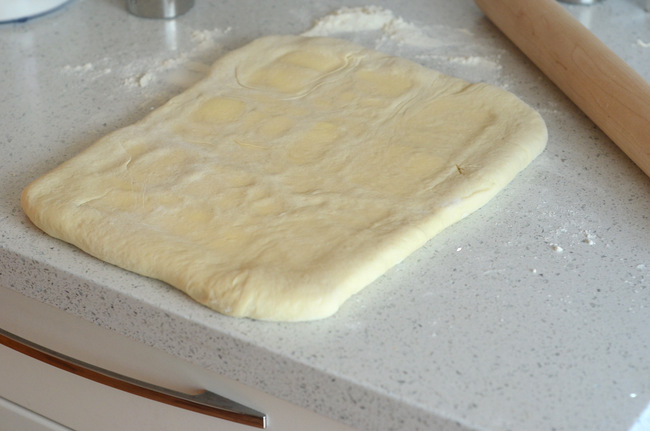
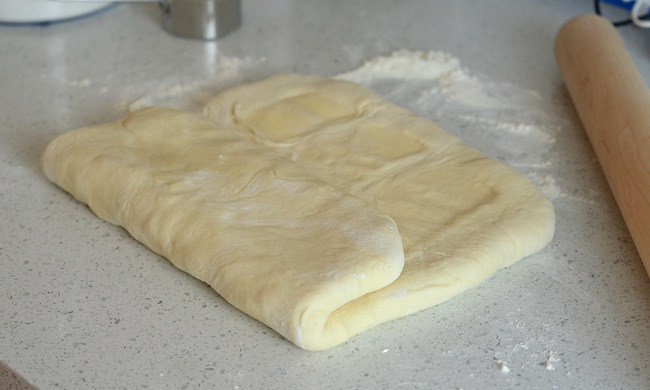
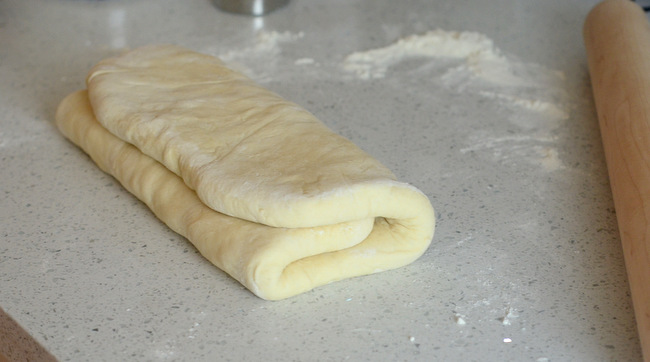
You’ll probably have 10 minutes of active time turning the dough and about 30 minutes resting between turns. The dough will need to rest again before you can shape the croissants, as resting the dough will make it much easier to handle.
Once your dough is ready, you can take it in a variety of different directions. You can make it into classic croissants by cutting the dough into triangles and rolling them up, which I’m doing here. You can cut the dough into rectangle and place a bit of chocolate inside before rolling them up, creating Pain au Chocolate. You can also turn it into danishes and cinnamon buns. You can’t go wrong with classic croissants, so I’ll always recommend that as a starting point when you’re first leaning the recipe.
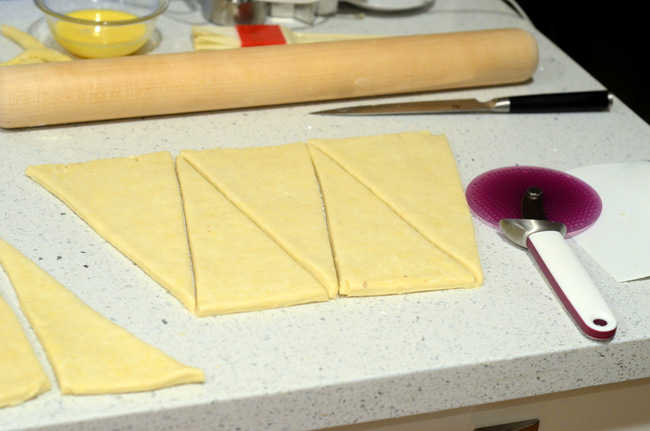
I would estimate that there are about 60 minutes of active time with this recipe and that might end up being less as you become more experienced with the technique. I can’t call it a 60-minute recipe, however, because you can’t skip the rest periods that the dough needs to rise. So take your time and you will be rewarded with flaky, buttery golden-brown croissants that will nearly melt in your mouth – and that will impress every single person you decide to share them with!!
Easy Overnight Croissants From Scratch
4 oz water, room temperature*
2 cups (approx 8 oz) all purpose flour
.25 oz dry active yeast (1 envelope)
2 1/2 tsp sugar
1/2 tsp salt
10 tbsp butter, chilled
The night before:
In a large bowl, combine flour, yeast, sugar and salt whisk to combine. Cut butter into almond-sized chunks (1/2-inch pieces) and toss in flour mixture. If using a food processor, pulse until most pieces of butter are the size of a large almond, then transfer to a large bowl. Add in water and stir until dough comes together in a shaggy mass.
Turn dough out onto a lightly floured surface and knead to smooth. Try not to break up the pieces of butter. If necessary, add in additional 1-2 tbsp water. Transfer dough to a large bowl, and cover with plastic wrap. Let rise in the refrigerator for 12 hours, or overnight.
The next morning:
Roll out pastry into a large rectangle that is about 1/4-inch thick. Fold the pastry in thirds, as if folding a letter to fit in an envelope (pictured above). Rotate pastry 90-degrees, roll into a flat sheet and repeat folding process. Wrap pastry in plastic wrap and chill for 20-30 minutes. Unwrap chilled pastry and complete two more “folds.†Wrap in plastic wrap and chill for at least 60 minutes before shaping the dough.
On a lightly floured surface, roll dough into a large rectangle that is about 1/4-inch thick and about three times as long as it is tall. Cut into 8 (or 7, if you want them a touch larger) triangles.
Starting with the flat side of a triangle, roll the dough towards the tip to create a croissant shape. Place on a parchment or silicone-lined baking sheet. Repeat with remaining triangles.
Very loosely cover the baking sheets with plastic wrap and place in a warm place to rise for 2 hours, or until about doubled in size.
Preheat the oven to 400 F.
Bake the croissants for 10 minutes, then lower the oven temperature to 375 F and bake for 15-20 minutes, or until deep golden brown. Transfer croissants to a wire rack to cool before serving.
Makes 8 croissants.
*When you’re reading pastry recipes, you’ll see that some include milk, others include water and some use both. This recipe uses water as the primary liquid. In a pastry recipe, some milk can increase the browning of the finished pastries, but it also tends to make them a touch softer than water alone. I personally love a crisp, shatter-in-your-mouth croissant, so using a water-based pastry gives me results that I prefer. If you like softer croissants – and it’s fine if you do, as they can be equally tasty – you can actually substitute milk into this recipe for the water.

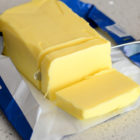




Teresa
June 1, 2018Would it work to get to the step where the croissants are shaped then put them in the fridge overnight, pulled out to room temperature the next morning and baked for a fresh, warm breakfast treat? Or would that ruin the integrity of the croissant? Thanks!
Natalie
June 2, 2018These croissants look perfect!
Nicole
June 11, 2018Hi Teresa, Good question. You can let the rise overnight in the fridge once the croissants are shaped, but be sure not to skimp on the resting/rising time of the dough before shaping them. So if you start your dough-making very early in the day, you should be good to go!